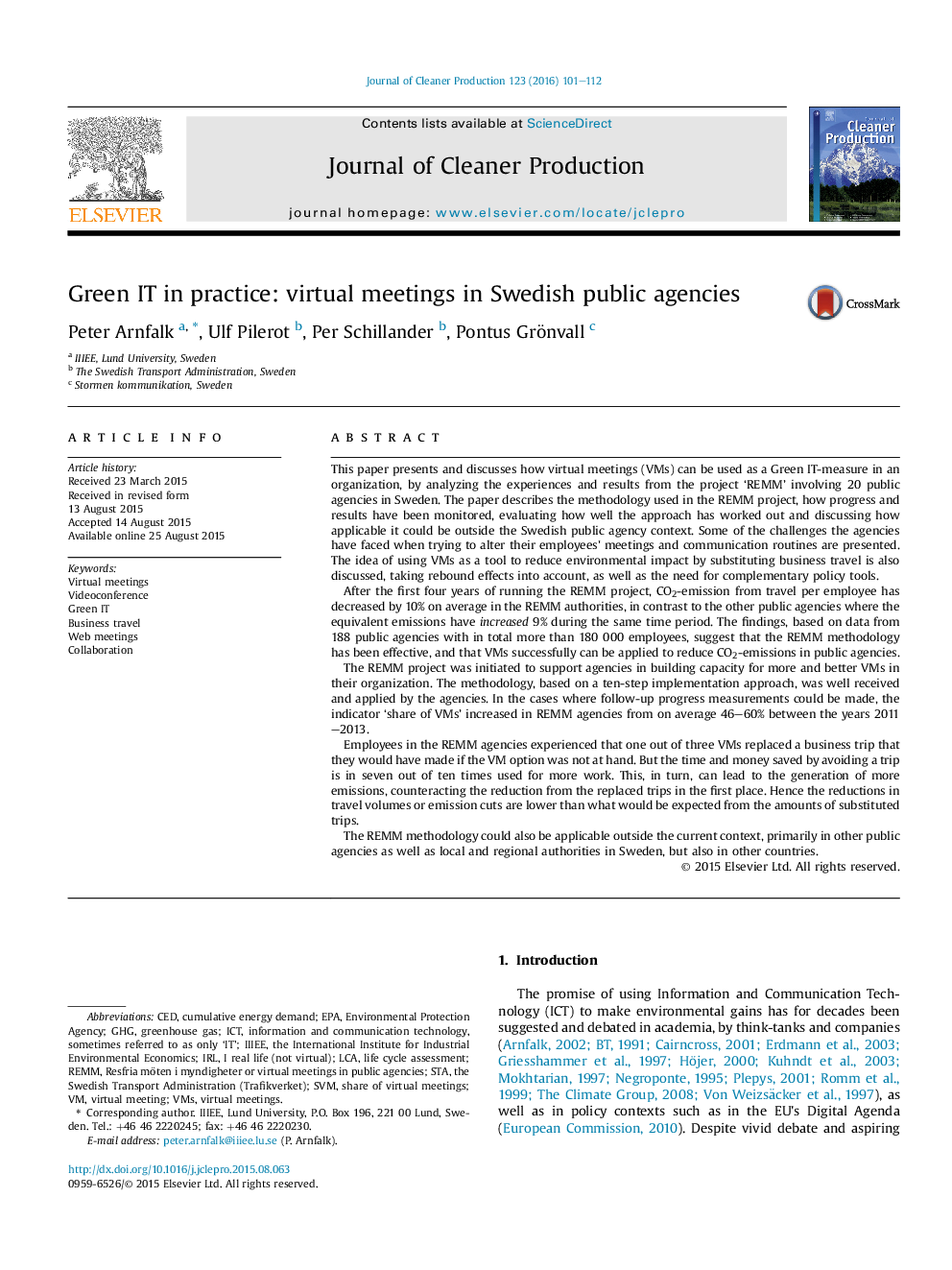| Article ID | Journal | Published Year | Pages | File Type |
|---|---|---|---|---|
| 1744223 | Journal of Cleaner Production | 2016 | 12 Pages |
This paper presents and discusses how virtual meetings (VMs) can be used as a Green IT-measure in an organization, by analyzing the experiences and results from the project ‘REMM’ involving 20 public agencies in Sweden. The paper describes the methodology used in the REMM project, how progress and results have been monitored, evaluating how well the approach has worked out and discussing how applicable it could be outside the Swedish public agency context. Some of the challenges the agencies have faced when trying to alter their employees' meetings and communication routines are presented. The idea of using VMs as a tool to reduce environmental impact by substituting business travel is also discussed, taking rebound effects into account, as well as the need for complementary policy tools.After the first four years of running the REMM project, CO2-emission from travel per employee has decreased by 10% on average in the REMM authorities, in contrast to the other public agencies where the equivalent emissions have increased 9% during the same time period. The findings, based on data from 188 public agencies with in total more than 180 000 employees, suggest that the REMM methodology has been effective, and that VMs successfully can be applied to reduce CO2-emissions in public agencies.The REMM project was initiated to support agencies in building capacity for more and better VMs in their organization. The methodology, based on a ten-step implementation approach, was well received and applied by the agencies. In the cases where follow-up progress measurements could be made, the indicator ‘share of VMs’ increased in REMM agencies from on average 46–60% between the years 2011–2013.Employees in the REMM agencies experienced that one out of three VMs replaced a business trip that they would have made if the VM option was not at hand. But the time and money saved by avoiding a trip is in seven out of ten times used for more work. This, in turn, can lead to the generation of more emissions, counteracting the reduction from the replaced trips in the first place. Hence the reductions in travel volumes or emission cuts are lower than what would be expected from the amounts of substituted trips.The REMM methodology could also be applicable outside the current context, primarily in other public agencies as well as local and regional authorities in Sweden, but also in other countries.
